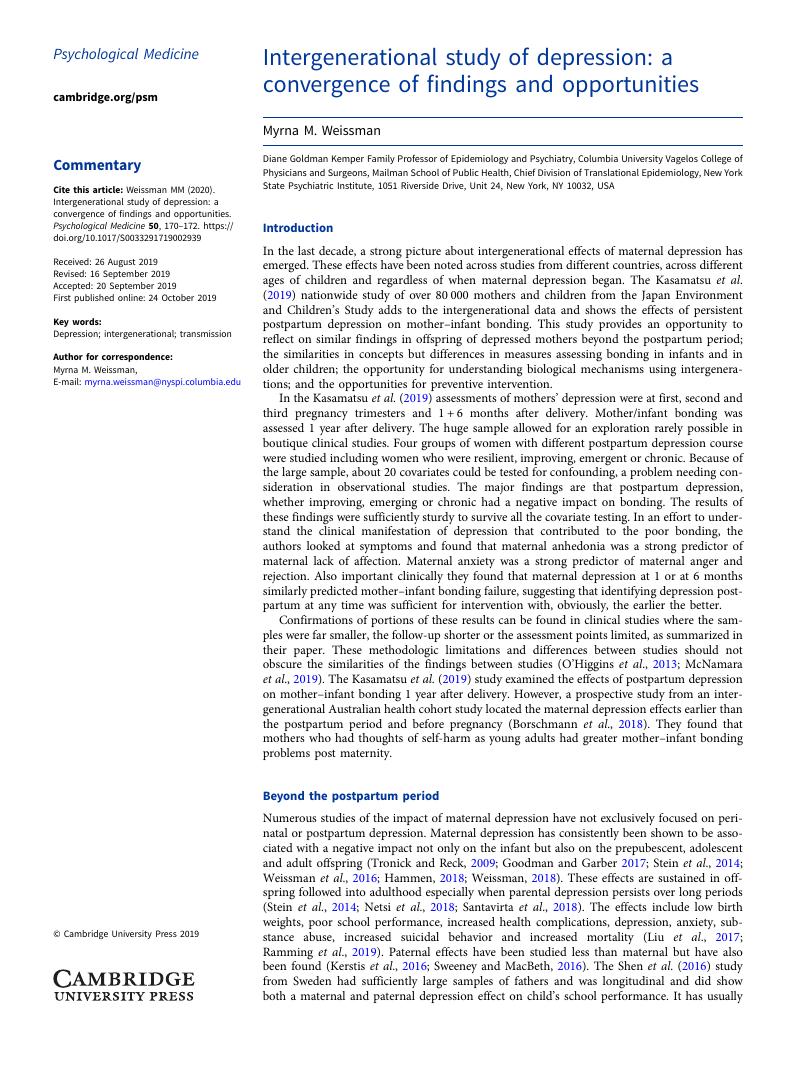Crossref Citations
This article has been cited by the following publications. This list is generated based on data provided by Crossref.
Abraham, Eyal
Posner, Jonathan
Wickramaratne, Priya J
Aw, Natalie
van Dijk, Milenna T
Cha, Jiook
Weissman, Myrna M
and
Talati, Ardesheer
2020.
Concordance in parent and offspring cortico-basal ganglia white matter connectivity varies by parental history of major depressive disorder and early parental care.
Social Cognitive and Affective Neuroscience,
Vol. 15,
Issue. 8,
p.
889.
Wan Mohd Yunus, Wan Mohd Azam
Matinolli, Hanna-Maria
Waris, Otto
Upadhyaya, Subina
Vuori, Miika
Korpilahti-Leino, Tarja
Ristkari, Terja
Koffert, Tarja
and
Sourander, Andre
2022.
Digitalized Cognitive Behavioral Interventions for Depressive Symptoms During Pregnancy: Systematic Review.
Journal of Medical Internet Research,
Vol. 24,
Issue. 2,
p.
e33337.
Abraham, Eyal
Letkiewicz, Allison M.
Wickramaratne, Priya J.
Bunyan, Maya
van Dijk, Milenna T.
Gameroff, Marc J.
Posner, Jonathan
Talati, Ardesheer
and
Weissman, Myrna M.
2022.
Major depression, temperament, and social support as psychosocial mechanisms of the intergenerational transmission of parenting styles.
Development and Psychopathology,
Vol. 34,
Issue. 5,
p.
1997.
Tubbs, Justin D.
and
Sham, Pak C.
2023.
Preliminary Evidence for Genetic Nurture in Depression and Neuroticism Through Polygenic Scores.
JAMA Psychiatry,
Vol. 80,
Issue. 8,
p.
832.
Waldmann, Tamara
Schaible, Jochen
Stiawa, Maja
Becker, Thomas
Wegscheider, Karl
Adema, Bonnie
Wiegand-Grefe, Silke
and
Kilian, Reinhold
2023.
The cost-utility of an intervention for children and adolescents with a parent having a mental illness in the framework of the German health and social care system: a health economic evaluation of a randomized controlled trial.
Child and Adolescent Psychiatry and Mental Health,
Vol. 17,
Issue. 1,
Griffith, Julianne M.
McCormick, Kathleen C.
and
Hankin, Benjamin L.
2023.
Reference Module in Neuroscience and Biobehavioral Psychology.





